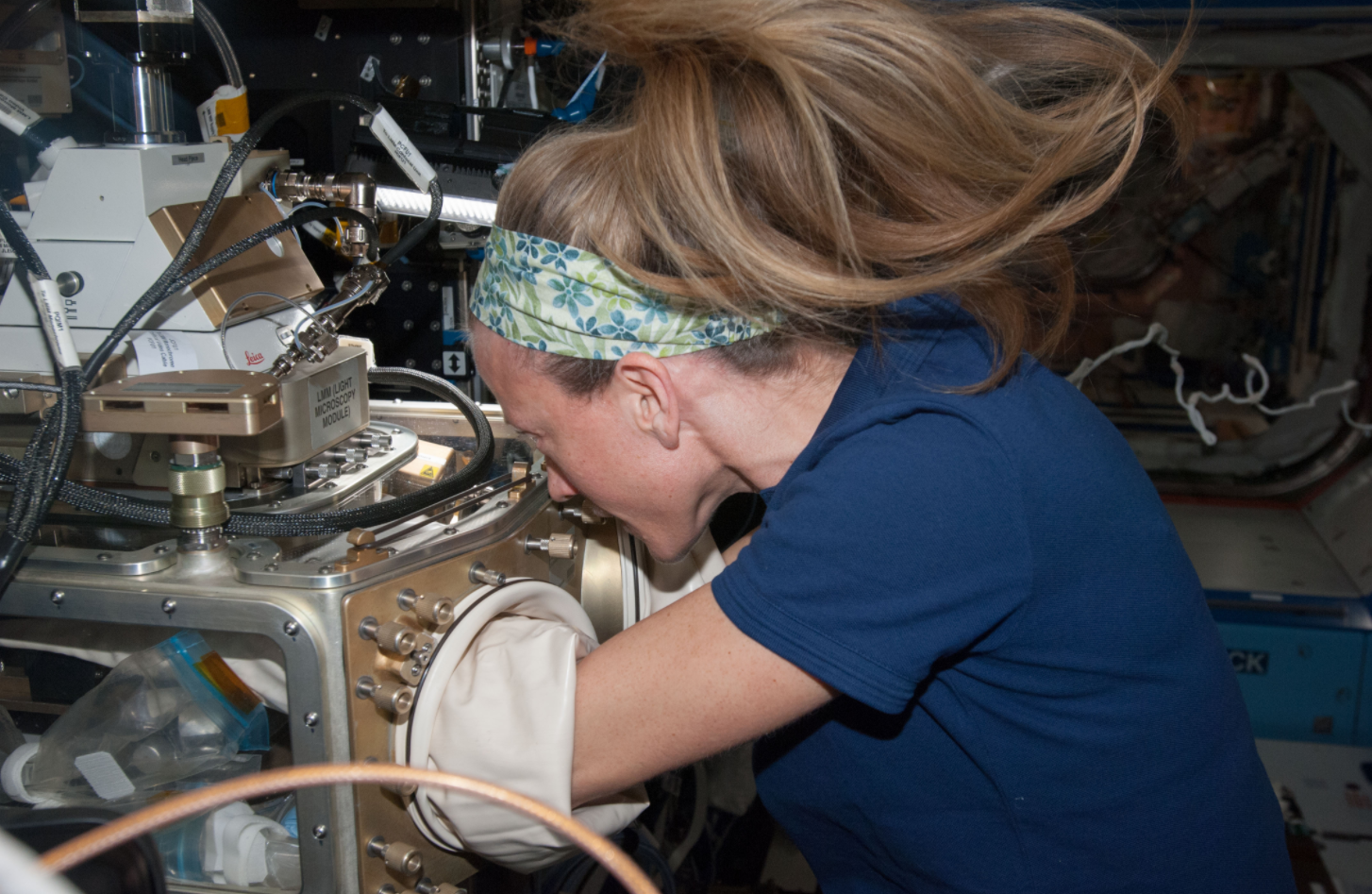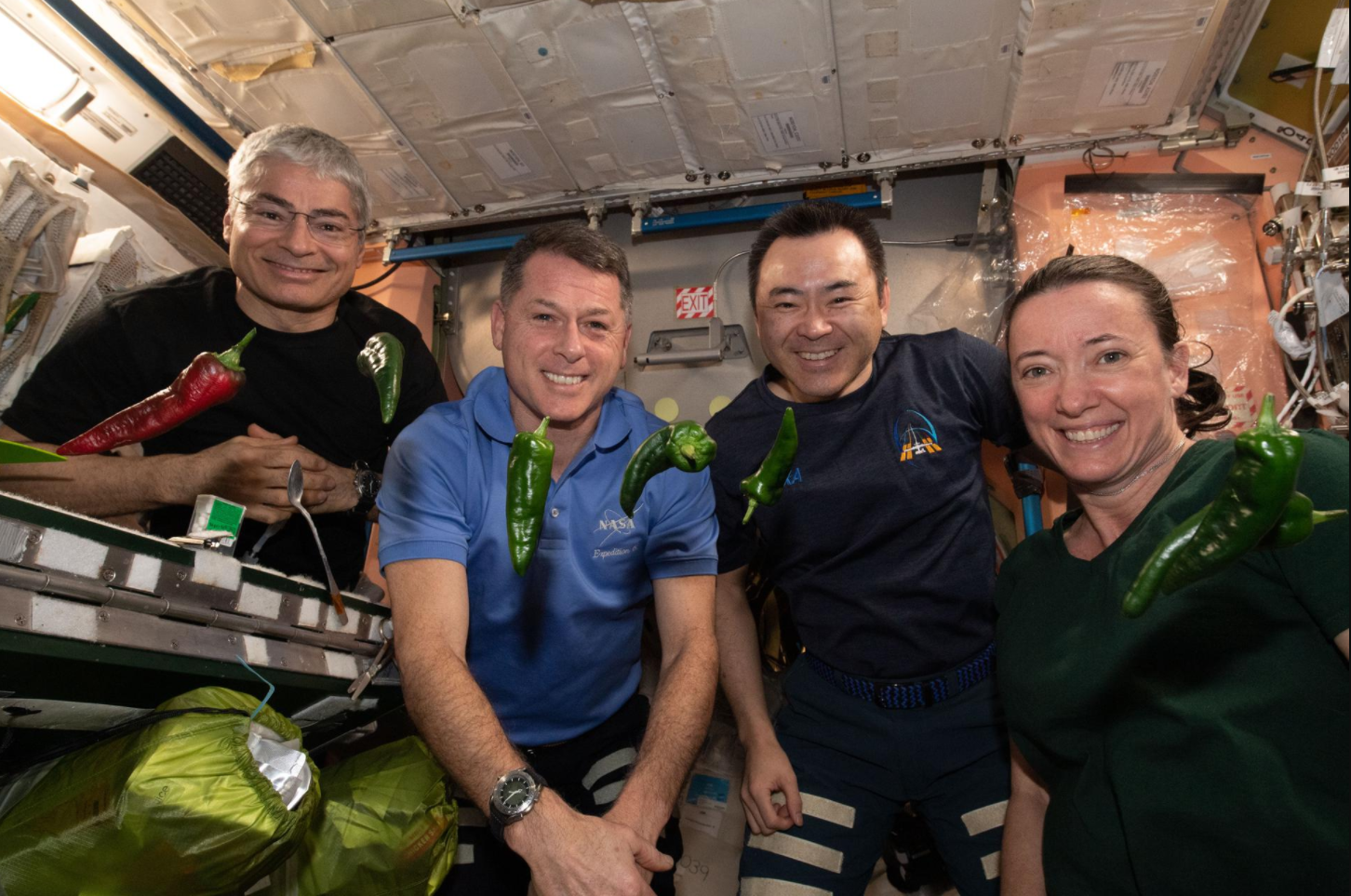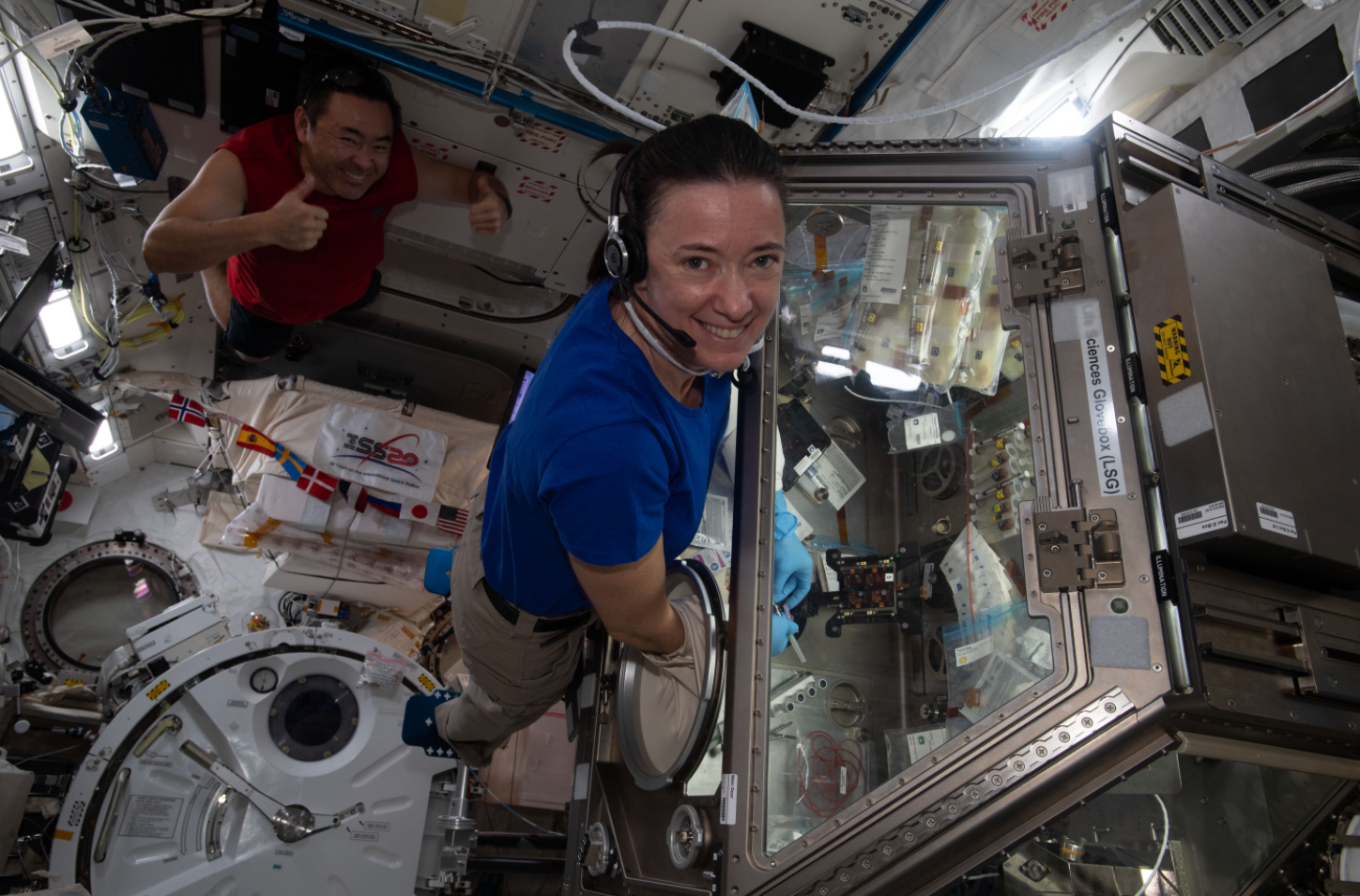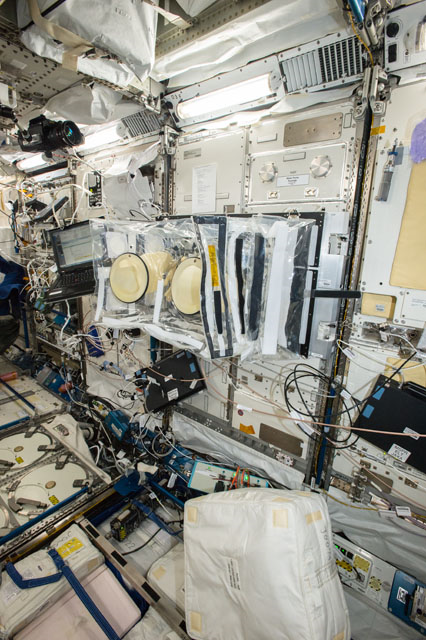Station Science Top News: Nov. 4, 2021
After more than a decade of impactful fluids research on the space station, the Light Microscopy Module (LMM) was removed from the Fluids Integrated Rack this past week. LMM experiments have helped improve products from shampoo to pharmaceuticals, as well as contributing to new patents.
Experiments conducted in the facility have provided insights into colloids, mixtures of tiny particles suspended in a liquid, that have helped improve products from shampoo to pharmaceuticals. Results have contributed to three new patents for U.S.-based company Proctor and Gamble. LMM is being physically replaced by the Flow Boiling Condensation Experiment (FBCE) — results from which could help reduce the size and weight of more efficient spacecraft heat removal systems.

NASA astronaut Karen Nyberg, Expedition 37 flight engineer, works with test samples housed in the Light Microscopy Module inside the Fluids Integrated Rack of the International Space Station’s Destiny laboratory. Credits: NASA
***
A study found that exposing mice to artificial gravity while aboard the space station limits muscle loss and gene expression changes that would typically be experienced in microgravity. This suggests that artificial gravity could be used on deep space missions to mitigate microgravity’s effects.
Japan Aerospace Exploration Agency (JAXA) investigation Mouse Habitat Unit-1 examined spaceflight-elicited changes to DNA and gene expression in male mice and their offspring. Researchers flew two groups of mice to the International Space Station to study if artificial gravity can prevent skeletal muscle deterioration. One group was exposed to artificial gravity, and the other experienced microgravity. The scientists found that exposure to artificial gravity allowed the mice to maintain muscle fiber composition and muscle mass and prevent gene expression changes. Additionally, based on computer simulation analysis, the gene Cacng1 was identified as being associated with muscle atrophy. These results could assist in the diagnosis and treatment of muscle disorders, and it positions artificial gravity as a potentially effective tool for reducing muscle loss on long-duration missions in microgravity.
***
NASA astronaut Mark Vande Hei harvested the first crop of chile peppers aboard the International Space Station this past week. Growing more complex, nutrient-rich crops like these chiles can help support future deep space missions.
The chile peppers started growing on July 12, 2021, as a part of Plant Habitat-04 and represent one of the longest and most challenging plant experiments attempted aboard the orbiting laboratory. This experiment is part of NASA’s research into growing crops in space. Fruits and vegetables can supplement astronauts’ diet with key nutrients like Vitamin C and Vitamin K, which explorers will need during long-duration deep space missions in the future. The Crew-3 astronauts will take over the crop when they arrive at the orbiting laboratory and will conduct a final harvest of the peppers in late November.
Read more in the image feature “Astronauts Have First Taste of Peppers Grown in Space.”

Expedition 66 flight engineers NASA astronauts Mark Vande Hei and Shane Kimbrough, JAXA astronaut Aki Hoshide, and NASA astronaut Megan McArthur added some spice to their diets on Oct. 29 when they and ESA (European Space Agency) astronaut and Expedition 66 Commander Thomas Pesquet sampled seven freshly harvested mild heat chile peppers. Credits: NASA
***
Crew-2 Return Science Highlights:
After more than six months aboard the International Space Station, the astronauts of NASA’s SpaceX Crew-2 mission are returning home. These four crew members contributed to hundreds of scientific investigations and technology demonstrations while aboard the orbiting laboratory, benefiting us back on Earth, and helping us explore farther into the solar system. Some experiments they worked on include:
- Cardinal Muscle, which tests whether engineered tissues cultured in space could take advantage of this accelerated loss and support development of a model for quickly assessing possible drugs prior to human clinical trials.
- Multiple combustion studies. Many of the astronauts serviced and replaced components inside the Combustion Integrated Rack for flame research. During Crew-2’s mission, combustion researchers even achieved a first for cool flames in space.
- Real-Time Protein Crystal Growth, a biotechnology study that demonstrates new methods for producing high-quality protein crystals in microgravity to potentially develop better drugs to treat a variety of diseases on Earth and advance the commercialization of space.
- The Cell Gravisensing muscle atrophy study. Research shows that individual cells in animals can detect gravity, but how they do so is largely unknown. Cell Gravisensing, an investigation from JAXA, analyzes the role of changes in tension in cell stress fibers that occur during spaceflight.
Read about more research they worked on and watch a video (below) of their mission’s science highlights.

NASA astronaut and Expedition 65 Flight Engineer Megan McArthur works on the Cardinal Muscle investigation in the Life Sciences Glovebox aboard the International Space Station. This study tests whether such engineered tissues cultured in space could provide a model for studying muscle loss and assessing possible therapeutics prior to clinical trials. Credits: NASA








